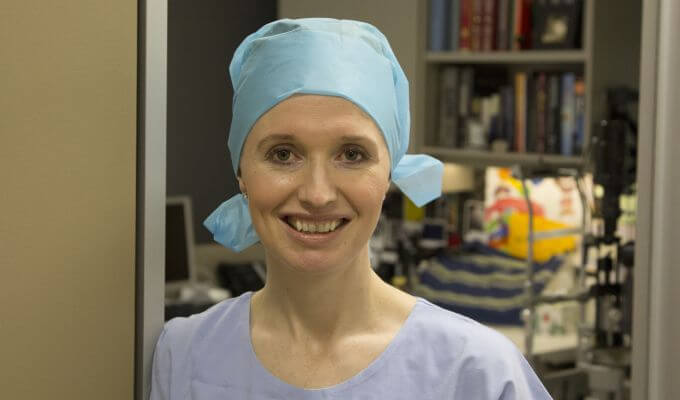Get This Report about Conjunctivitis
Table of ContentsThe Best Guide To Adult & Paediatric Eye SurgerySome Known Details About Eye Checks The smart Trick of Comprehensive Ophthalmology That Nobody is Talking AboutExcitement About Adult & Paediatric Eye Surgery
Ophthalmologists are clinical physicians that focus on the diagnosis as well as therapy of eye as well as vision troubles. What is the difference between an ophthalmologist as well as an eye doctor, then? What about lens? These 3 kinds of eye treatment experts have rather similar-sounding names and also overlapping job descriptions. It can be confusing initially look.They can not offer eye tests, create prescriptions, or diagnose or treat eye problems. Supply eye tests, vision testing, as well as prescriptions for glasses or contact lenses.

Eye doctors identify and treat injuries, infections, conditions, and also disorders of the eye. Therapies can consist of medicine taken orally (by mouth) or topically (in the eye), surgical treatment, cryotherapy (freeze treatment), and chemotherapy (chemical treatment). Ophthalmologists go to clinical school after that obtain numerous years of specialty training in the medical and also surgical treatment of the eye.
The Ultimate Guide To Comprehensive Ophthalmology
As they are the only doctor who can treat all eye conditions, eye doctors see a wide variety of eye problems, consisting of: Exactly how usually should you have an eye test? What are symptoms that suggest you may have an eye issue that needs to be examined by an optometrist? The American Academy of Ophthalmology recommends: As kids's eyes are growing and altering swiftly, they ought to receive a vision testing.
Grownups that have healthy eyes and also excellent vision need to have four detailed eye exams: one in their 20s, two in their 30s, and also one at age 40. These check-ups may allow the ophthalmologist to capture an eye condition or vision adjustments at an early stage. By the time you see signs, you might currently have some vision loss (ADULT STRABISMUS).

Individuals who are at a greater risk of eye disease might require to get an eye test more frequently. This can consist of people with diabetes mellitus, high blood pressure, or a family background of eye issues - EYE CHECKS. After age 65, your eyes must be checked each to two years. Despite age, people that wear contacts need to have a full eye exam each year.
Your sight depends on seeing the best eye physician at the best time. When it's time to "get your eyes checked," make certain you are seeing the appropriate eye treatment professional for your needs.
Not known Details About Comprehensive Ophthalmology

is a clinical or osteopathic medical professional that specializes in eye and vision care. Ophthalmologists vary from optometrists as well as opticians in their levels of training and in what they can detect and deal with (https://www.seolinksubmit.com/author/drcrlinecatt/). As a clinical doctor who has completed university as well as at the very least 8 years of added medical training, an eye doctor is accredited to exercise medicine and also surgery.
Several ophthalmologists are also associated with scientific study on the reasons as well as cures for eye illness and also vision problems. SUBSPECIALISTS: EXTRA KNOWLEDGE AND ALSO TRAINING FOR PARTICULAR EYE NEEDS While ophthalmologists are trained to take care of all eye troubles and problems, some Eye M.D.s concentrate on a particular location of medical or medical eye treatment.
He or she normally completes a couple of years of added, a lot more in-depth training called a fellowship in among the major subspecialty locations such as glaucoma, retina, cornea, pediatric medicines, neurology as well as cosmetic surgery, along with others. This added training as well as understanding prepares an ophthalmologist care for more facility or details problems in particular locations of the eye or in certain teams of patients.
An eye doctor is not a medical doctor. An eye doctor gets a physician of optometry (OD) degree after finishing four years of optometry school, come before by 3 like it years or even more years of university. They are licensed to exercise optometry, which primarily involves performing eye tests and also vision tests, recommending and also dispensing restorative lenses, finding certain eye problems, and suggesting medicines for particular eye conditions.
Some Known Factual Statements About Comprehensive Ophthalmology
They make use of prescriptions supplied by ophthalmologists or optometrists, but do not test vision or write prescriptions for aesthetic improvement. Opticians are not allowed to identify or treat eye conditions. All of us depend on our vision in more ways that we may understand. Without healthy vision, our capability to work, play, drive and even recognize a face can be significantly impacted.
Having a member of the family with eye condition can make you a lot more susceptible to having that condition also. Sight-stealing eye condition can show up at any time. Extremely often they are undetectable at initial and are tough to identify. That's why it is so important to see an ophthalmologist for a full clinical eye exam by age 40, and then as typically as prescribed by your Eye M.D.
If you have any one of these, make sure to see an eye doctor. A full, medical eye examination by an Eye M.D. can be the initial step towards conserving your sight. Bulging of one or both eyes; Dark drape or shroud that obstructs your vision; Reduced vision, even if temporary; Diabetes mellitus; Altered vision; Dual vision; Excess tearing; Eyelid irregularities; Family background of eye disease; Halos (colored circles around lights); Hypertension; HIV or AIDS; Injury to the eye; Loss of peripheral (side) vision; Misaligned eyes; New drifters (black "strings" or flecks in the vision) and/or flashes of light; Pain in the eye; Thyroid disease-related eye troubles (Graves' condition); Uncommon red eye.